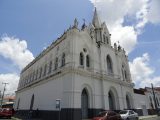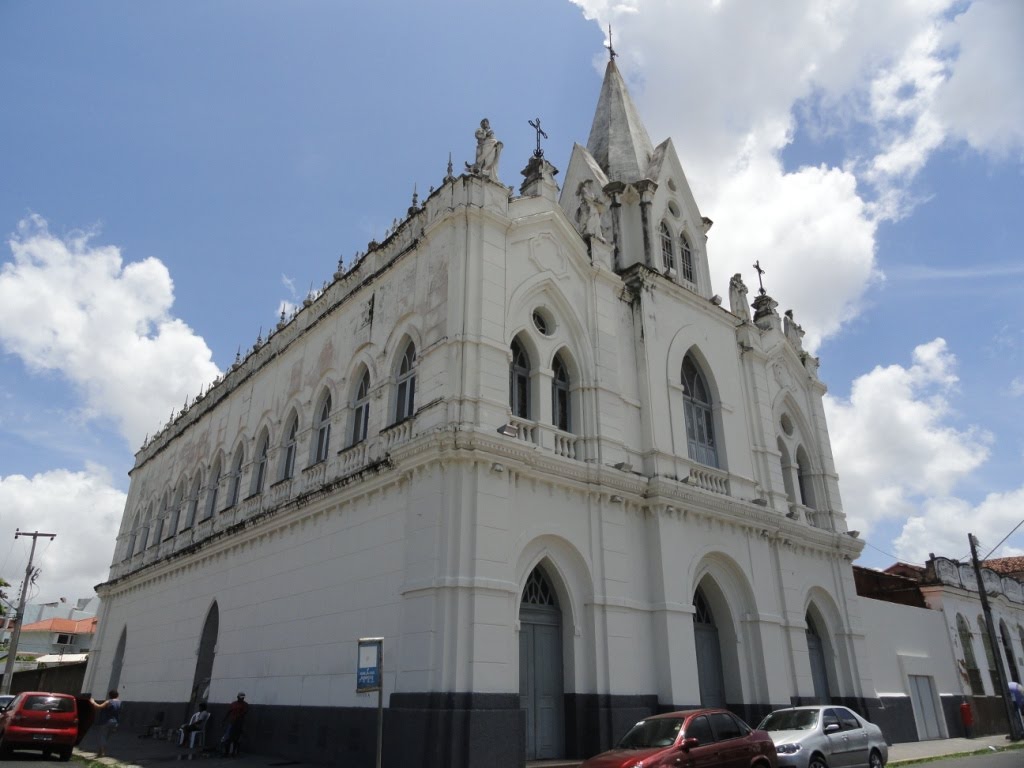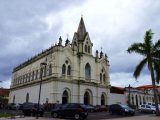Este post também está disponível em:
Português
English

The Church of Nossa Senhora dos Remédios or Igreja de Nossa Senhora dos Remédios dates from 1719 and is part of the urban ensemble of Gonçalves Dias Square, formerly Largo dos Remédios, where parties were held during the month of October, which made it famous, to the point of being quoted in books such as “O Mulato”, by Aluísio Azevedo.
Today, the Church of Nossa Senhora dos Remédios is among the most registered tourist spots in São Luís because of its privileged location, facing the Beira-mar.
The church is the only one with elements of Gothic architecture in the city, which makes it stand out among the others. Built in devotion to the Mother of God, it served as accommodation for pilgrims who arrived in the capital to honour the saint.

Igreja de Nossa Senhora dos Remédios
As it was in a less inhabited part of the city, the church was much visited by the payers of promises, who only stopped going there when a fugitive slave who had killed his master hid there, as Augusto Marques tells us.
The temple remained abandoned until 1775, when the governor of the time ordered the construction of a road along the contours of the current Rua Rio Branco, formerly Rua dos Remédios.

This facilitated access to the time that it was once again frequented.
The São Luís tram line also passed through this route, leaving from Largo do Palácio (Praça Dom Pedro II).
Over time, the Church of Nossa Senhora dos Remédios underwent some interventions. In 1892, the remodelling extended its area and, due to the condition of the ground at the back, it almost collapsed into ruin.
The major remodelling between 1903 and 1911 gave the church its current shape. The renovation was carried out with the help of local people (masons and servants who worked on the project) and merchants (who financed it).
The façade features a single bell tower with stained-glass windows in its side openings and two lateral bodies supporting images of four evangelists: Luke, John, Matthew and Mark.
On the second level of the façade are the ogival arched openings filled with stained glass. On the ground floor, three doors give access to the interior of the church. On the side of the church are 12 windows similar to those on the main façade.
Inside, there is only one nave separated from the sides by Corinthian columns supporting the choir and side aisles protected by 19th-century railings.
The beautiful stained-glass windows that decorate the church are German and date from the 20th century.
The largest one in the main entrance depicts the Birth. The church is currently one of the most popular for weddings.
Travel Tourism Guide of São Luís do Maranhão



















